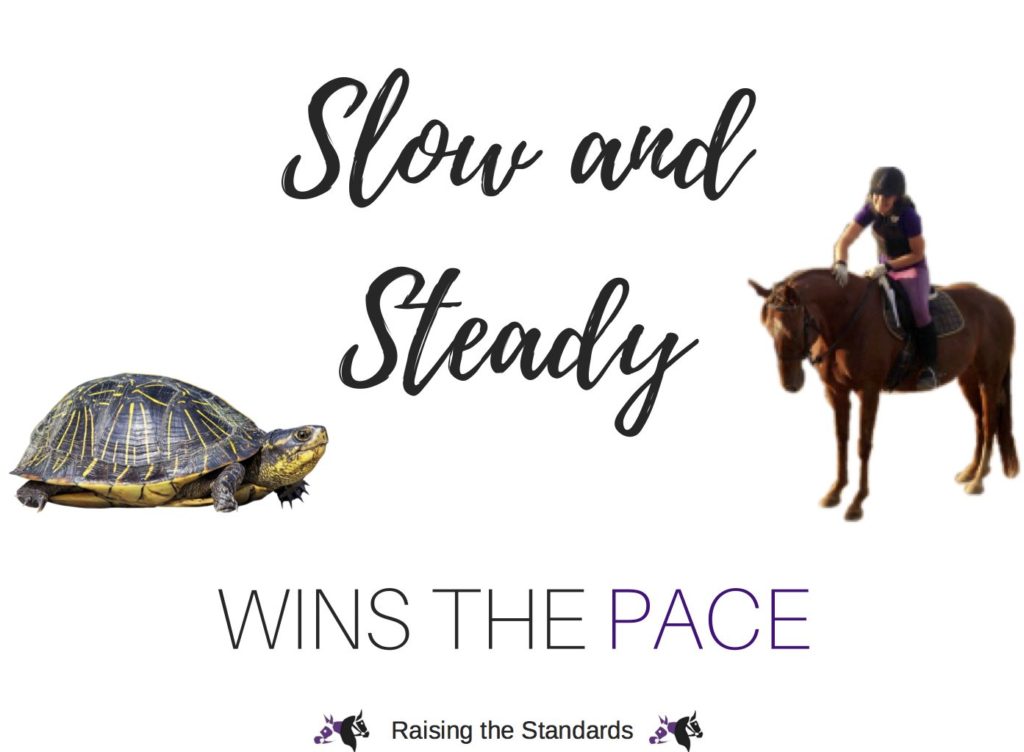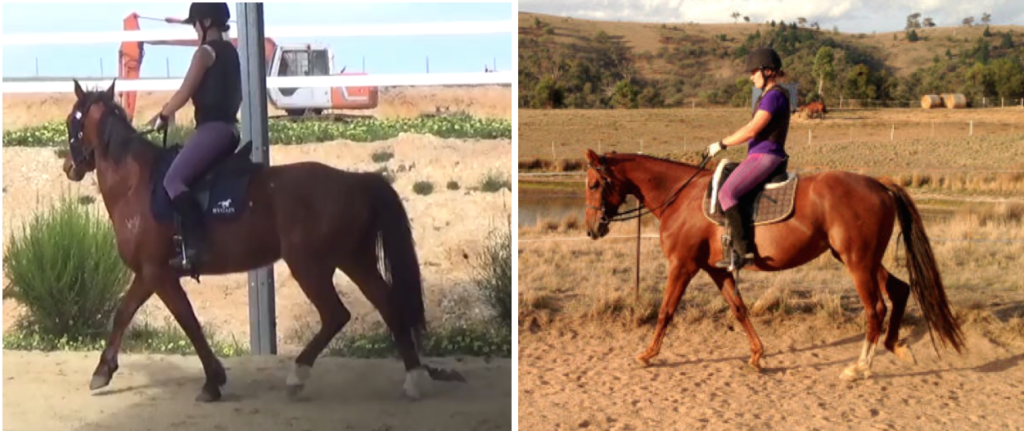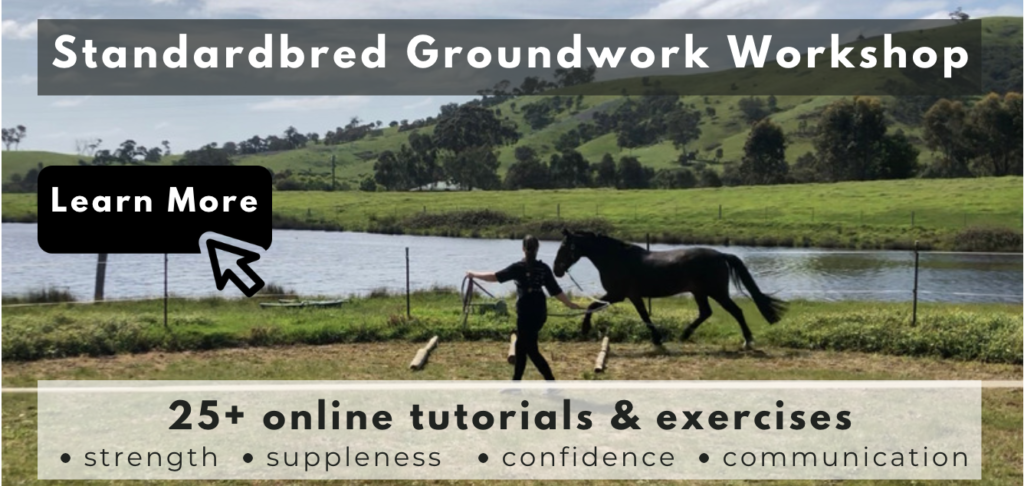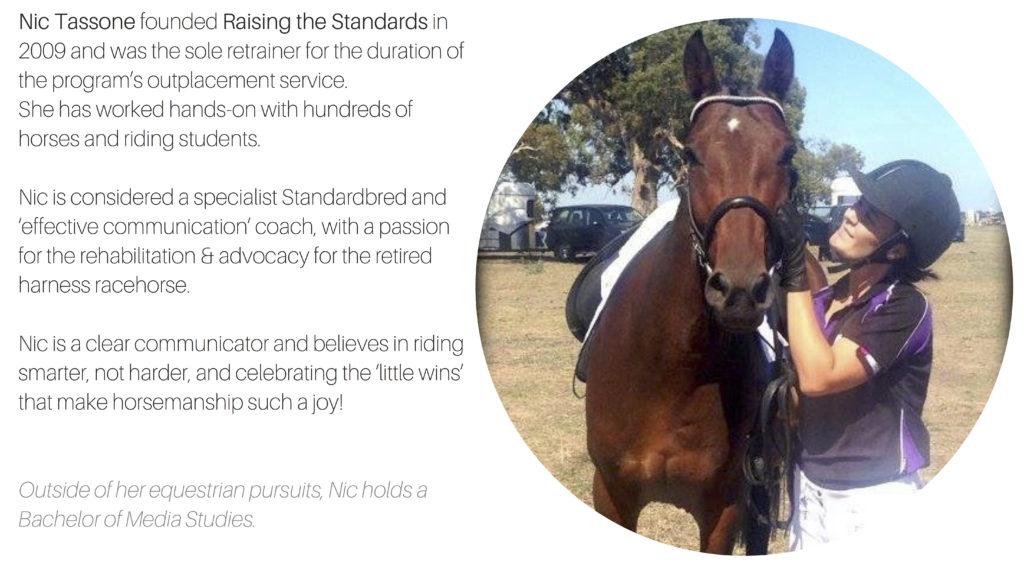As a Standardbred-specific trainer and coach, I speak to a lot of riders about common issues, such as how to stop a standardbred from pacing and how to teach the standardbred to canter.
These would be ‘the big two’ issues, in terms of working with the retired harness racehorse.
Back when I was coaching standardbred riders one-on-one (making a shift in recent years to provide online courses to help standardbred owners from all around the world) I’d often find when brought a horse to me for help with a ‘big issue’ we rarely got to them during the first session… sometimes not even in the first few sessions!
There were always be a whole range of niggles presenting in the slower gaits, or general riding challenges, which need to be addressed well before some of the more technical aspects of standardbred retraining were even considered.
Issues such as responsiveness, relaxation, straightness and flexion are the fundamental skills riding horses need to develop.
For example, if your standardbred is lazy to your aids, it’s going to be virtually impossible to stop your standardbred pacing under saddle.
Similarly, if your standardbred is trotting around with his head bent out to gaze at the feed shed way over there in the opposite direction, they are going to struggle to pick up the correct canter lead!
It just makes sense to ensure the most basic skills are mastered before you start worrying about the more technical stuff.
For standardbreds, there are also gait and post-racing issues such as bend and flexion added into the mix.
How Standardbreds Learn
It is my personal belief, from over twenty years working with standardbreds, that horses really can only learn and retain 1-2 new skills per session (depending on how complex or different the new skill is from harness racing principles/the way the horse has been conditioned during race training).
By ‘retain’, I mean learning a new skill, being able to repeat it several times within a workout and then recalling and being able to repeat the skill the next time you ride.
Repetition and focusing on the very next little step, rather than jumping ahead to bigger skills early on, has worked for my standardbreds.
Each skill is a small building block in the stairway of learning.
I often use the analogy of standardbred retraining being a lot like building a house:
The structure relies heavily on the foundations on which it is built.
If you take the time and care to lay a smooth base, and teach all those nitty gritty little skills, you create an even platform to propel your standardbred to success.
If you cut corners, rush, or miss steps, you’ll probably get the structure built without too much fuss, but as time passes and you want to add more things on, the whole framework is at risk of crashing down most spectacularly.
In terms of standardbred retraining, this outcome can mean utter disaster; a lot of frustration, overthinking expense and potential danger when dealing with a ’problem horse’.
Or being completely stalled in your progress, because your standardbred can’t do some of the skills they need to be able to move up to the next level.
Sometimes taking the time to dial things right back to the basics can be a powerful strategy for moving forward.
After all, as outlined in the video below – taken from our Standardbred Body & Mind Workshop – it can take several weeks of steady training for your standardbred to learn new skills and form new habits
In summary, I feel there’s a lot of value in that age-old saying ‘a stitch in time, saves nine’, which means that it’s better to spend a little time and effort to deal with a problem right now than to wait until later.
When it comes to retraining a standardbred, I suggest getting the basics established well as the first priority.
By building on a solid foundation of learning, you’ll find success comes far easier and more consistently as you advance.
It’s never too late to hit the ‘pause’ button and spend some time stripping your training back and focusing on key skills.
If you’re not sure where to start with this, I’d recommend you begin with groundwork.
Groundwork training is the most powerful way to create a strong connection with your standardbred, improve your communication with your horse, introduce ridden skills to your standardbred from the ground (a little ‘cheat sheet’ of sorts, to reduce confusion and overhwlem) and to increase your standardbred’s strength and suppleness, which are crucial for advancing through retraining.
This is exactly what you’ll find in our Standardbred Groundwork Workshop; all of the learning and exercises you need to be able to focus on the nitty gritties and master the key skills to launch you towards standardbred success!
Learn more about the Standardbred Groundwork Workshop by clicking here
?
Nic









